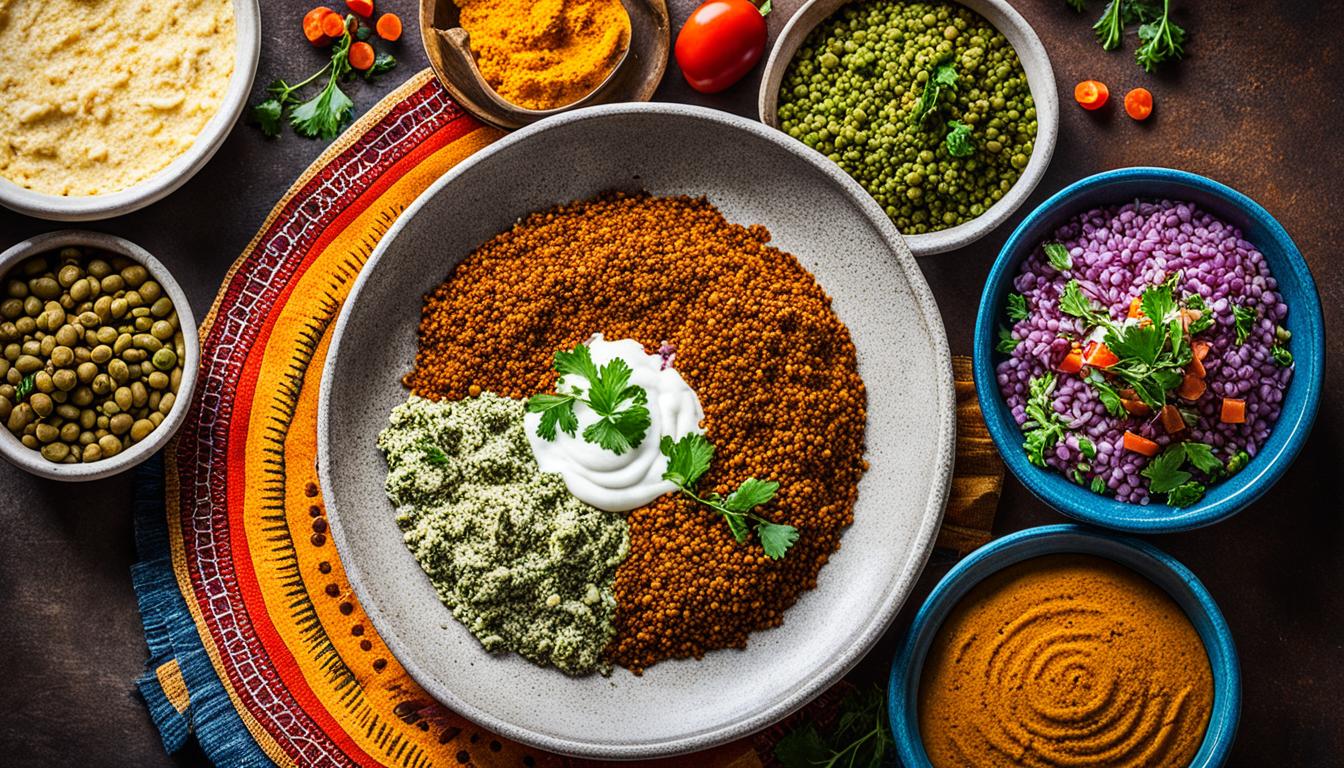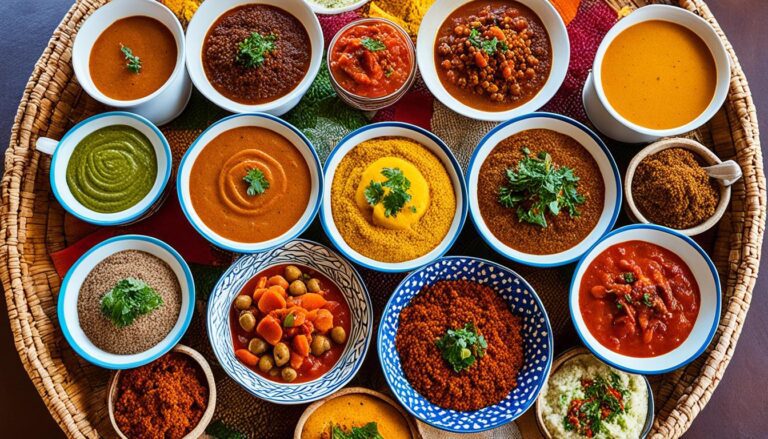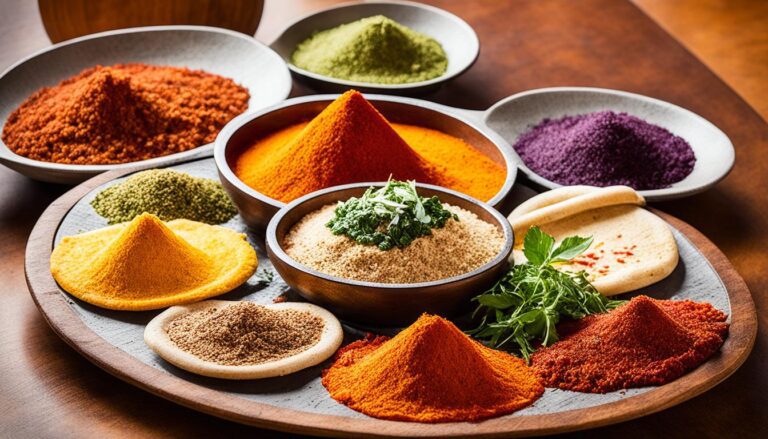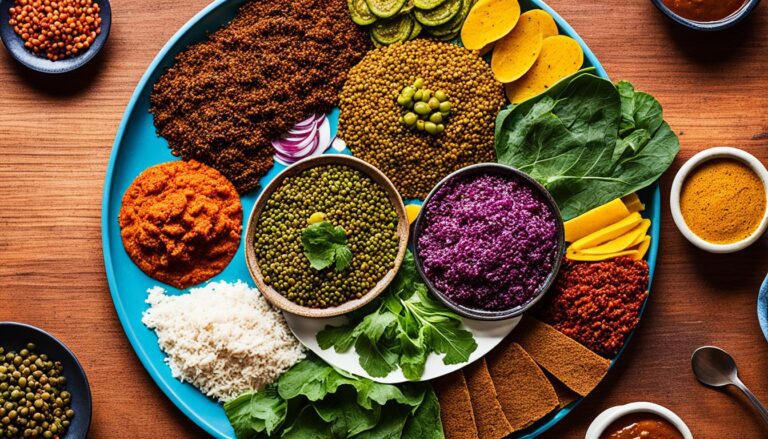Is There Dairy in Ethiopian Food?
Have you ever wondered whether dairy products are commonly used in traditional Ethiopian cuisine? Well, get ready to uncover the delicious secrets of Ethiopian food as we explore the presence of dairy in their culinary traditions.
Ethiopian cuisine is known for its unique flavors, rich spices, and diverse range of dishes. But does this popular African cuisine rely on dairy as a key ingredient?
Join us on a gastronomic journey through the cultural significance of Ethiopian food and its impact on dietary options, including for those with lactose intolerance.
Key Takeaways:
- Traditional Ethiopian cuisine typically does not heavily rely on dairy products.
- Ethiopian food offers a wide range of vegetarian and vegan options.
- Injera, a sourdough flatbread, and berbere, a spice blend, are key ingredients in Ethiopian cooking.
- Niter kibbeh, a spiced clarified butter, is commonly used in Ethiopian dishes, but there are alternative options for those avoiding dairy.
- Ethiopian cuisine caters to various dietary needs, making it a great choice for those seeking dairy-free dining experiences.
Ethiopian Food Culture and Dietary Traditions
In Ethiopia, food is more than just sustenance – it is a celebration of flavor, tradition, and communal dining experiences. Ethiopian cuisine is renowned for its vibrant spices and unique flavors that tantalize the taste buds. Whether you’re a vegetarian, a vegan, or an adventurous food lover, Ethiopian cuisine has something to offer.
One of the highlights of Ethiopian food culture is the abundance of vegetarian and vegan options. Ethiopian cuisine seamlessly blends spices and herbs with a variety of plant-based ingredients, creating delicious and satisfying dishes. From hearty lentil stews to flavorful vegetable curries, the culinary landscape of Ethiopia caters to diverse dietary preferences.
One iconic element of Ethiopian cuisine is injera, a sourdough flatbread made from fermented teff flour. Injera serves as a foundation for many Ethiopian dishes, acting as a utensil and a delicious accompaniment. Its tangy flavor and spongy texture enhance the overall eating experience, adding a unique touch to every meal.
Discovering Ethiopian Spices and Flavors
Ethiopian spices and flavors are the heart and soul of the country’s cuisine. The well-known spice blend, berbere, plays a starring role in many Ethiopian dishes. Combining chili peppers, garlic, ginger, paprika, fenugreek, and other aromatic spices, berbere adds a fiery and robust kick to stews and sauces. With its complex flavor profile, berbere is a testament to the richness of Ethiopian culinary traditions.
Another popular Ethiopian spice is mitmita, which offers a fiery heat and a distinct taste. This spice blend typically contains chili peppers, cardamom, cloves, and cinnamon, lending a bold and intense flavor to any dish it graces.
Ethiopian cuisine also embraces the use of traditional ingredients like niter kibbeh, a spiced clarified butter. However, for those seeking dairy-free alternatives, Ethiopia offers a range of flavorful substitutes that maintain the authenticity of the cuisine.
In this section, we have explored the vibrant food culture of Ethiopia, emphasizing the diverse spices and flavors that define their cuisine. We have also highlighted the availability of vegetarian and vegan options, as well as the significance of traditional Ethiopian ingredients like injera and berbere. The next section will delve deeper into key ingredients used in Ethiopian cooking, offering a closer look at their roles and cultural significance.
Exploring Key Ingredients in Ethiopian Cuisine
In Ethiopian cooking, several key ingredients bring depth and flavor to dishes. Let’s dive into some of these essential components and their role in creating the unique taste of Ethiopian cuisine.
Injera: The Staple of Ethiopian Meals
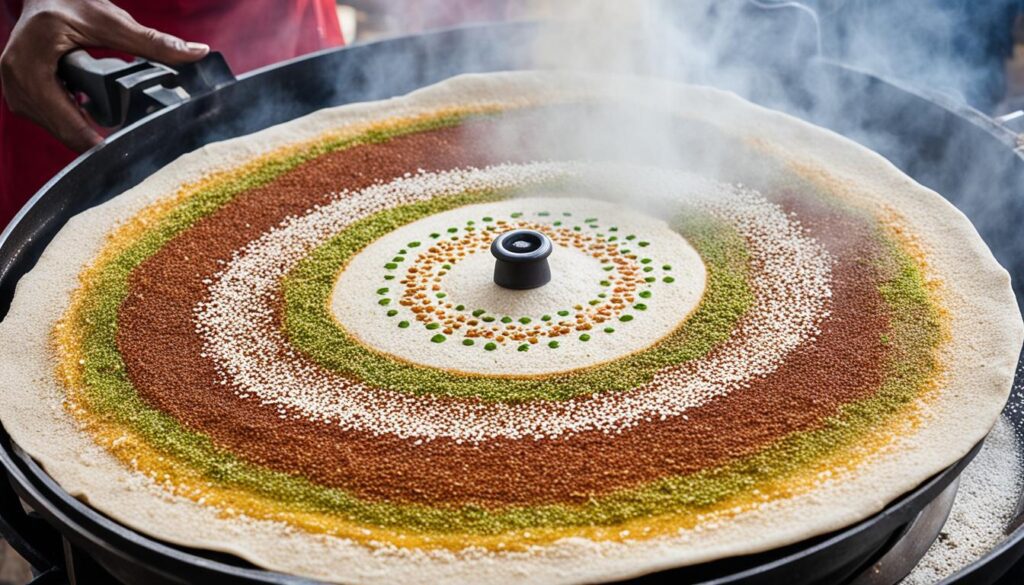
One cannot talk about Ethiopian food without mentioning injera. This sourdough flatbread is not only a staple but also an integral part of the culture. Made from fermented teff flour, injera serves as a base for various dishes.
Berbere Spice: A Burst of Flavors
Berbere spice is a significant player in Ethiopian cuisine, adding a burst of flavors to dishes. This fiery blend typically includes a variety of spices such as chili peppers, cumin, coriander, ginger, and fenugreek. The result is a complex and aromatic seasoning that enhances the taste and aroma of many traditional Ethiopian dishes.
Niter Kibbeh: The Infused Butter
Niter kibbeh is a spiced clarified butter that holds a special place in Ethiopian cooking. It is made by simmering butter with a mixture of spices, including cardamom, cloves, cinnamon, and turmeric. This process infuses the butter with a rich, fragrant flavor, elevating the taste of dishes like stews and stir-fries.
However, for those avoiding dairy, alternatives like vegetable oils can be used as a substitute for niter kibbeh without compromising on the distinctive Ethiopian flavors.
In this section, we have explored the key ingredients in Ethiopian cuisine, including injera, berbere spice, and niter kibbeh. These elements contribute to the vibrant and flavorful nature of Ethiopian dishes. In the next section, we will address the question of whether dairy is prominent in Ethiopian food and explore dairy-free options.
Dairy in Ethiopian Food – Fact or Fiction?
When it comes to Ethiopian cuisine, one might wonder about the presence of dairy in traditional dishes. Does Ethiopian food heavily rely on dairy products like milk, cheese, and butter? Let’s delve into the topic and uncover the truth.
While dairy is not a prominent component in Ethiopian food, there are a few traditional Ethiopian dishes that incorporate dairy. One such example is ayib, a cottage cheese-like dairy product often served alongside injera, the staple sourdough flatbread. However, it’s important to note that these dairy dishes are not as common compared to other elements of Ethiopian cuisine.
For those seeking dairy-free options, Ethiopian cuisine offers a wide variety of flavorsome dishes that cater to various dietary preferences. In fact, many traditional Ethiopian recipes are naturally dairy-free, making it easy to enjoy an authentic Ethiopian meal without consuming dairy products.
One popular dairy-free Ethiopian recipe is miser wot, a spicy lentil stew that combines aromatic spices like berbere. Another delicious option is shiro, a flavorful chickpea or lentil-based stew. These dishes showcase the vibrant flavors and unique ingredients that define Ethiopian cuisine.
Moreover, lactose intolerance is prevalent in Ethiopia, with many individuals experiencing difficulty digesting dairy products. This has influenced the dietary choices and cooking practices of Ethiopians, leading to the creation of dairy-free alternatives and dairy-light traditional dishes.
Alternative Butter Substitute: Niter Kibbeh
In Ethiopian cuisine, niter kibbeh plays a significant role. This spiced clarified butter adds depth of flavor to various dishes. While traditional niter kibbeh is made with butter, dairy-free versions can be easily prepared using plant-based substitutes such as coconut oil or vegan butter. This allows individuals with lactose intolerance to enjoy the distinctive taste of Ethiopian cuisine without compromising their dietary needs.
By embracing dairy-free Ethiopian recipes and adapting traditional dishes to cater to lactose intolerance, Ethiopian cuisine remains inclusive and accessible to a wide range of dietary preferences. Its rich flavors, vibrant spices, and diverse ingredients continue to entice food enthusiasts around the world, offering a delightful culinary experience for all.
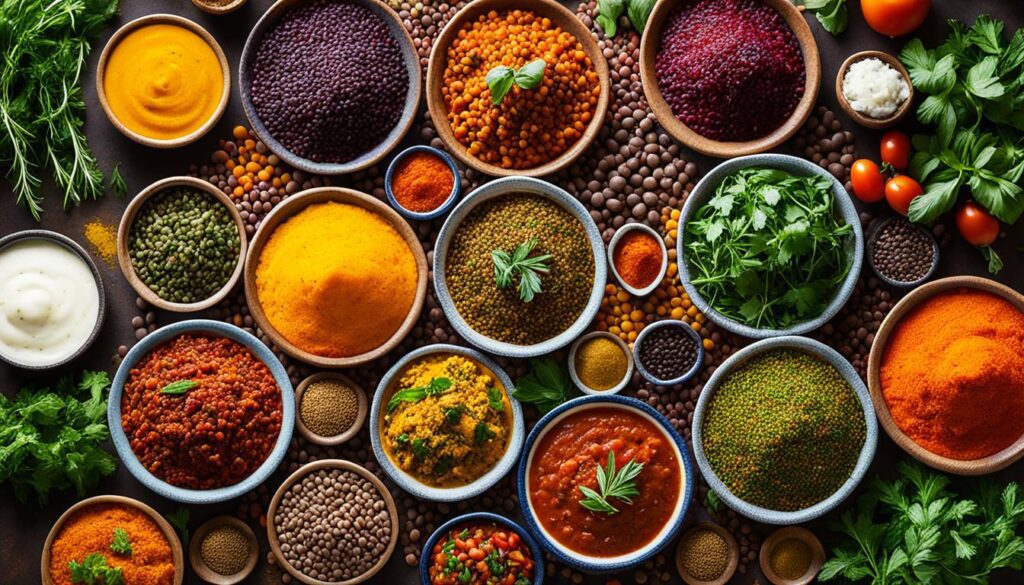
Conclusion
In conclusion, after exploring the presence of dairy in Ethiopian food, we have discovered that traditional Ethiopian cuisine generally does not heavily rely on dairy products. This makes it an excellent choice for those seeking dairy-free dining experiences. Ethiopian food offers a delightful array of flavors, spices, and ingredients that create a unique and diverse culinary experience.
One of the remarkable aspects of Ethiopian cuisine is its wide range of vegetarian and vegan options. With injera as a versatile base and a variety of flavorful vegetable and lentil dishes, it’s easy for individuals with different dietary needs to find satisfying and delicious choices. Whether you are lactose intolerant or simply prefer to avoid dairy, Ethiopian food offers a wealth of dairy-free possibilities.
By understanding the food culture of Ethiopia, one can appreciate the skillful use of traditional ingredients and cooking techniques. Ethiopian cuisine embraces alternative practices, such as the substitution of niter kibbeh, a spiced clarified butter, with plant-based alternatives. This adaptability ensures that everyone can enjoy the culinary delights of Ethiopia, regardless of their dietary restrictions or preferences.
So, whether you are a food enthusiast exploring new flavors, a vegan or vegetarian looking for exciting plant-based options, or someone with lactose intolerance seeking dairy-free alternatives, Ethiopian cuisine invites you on a journey of culinary discovery. Its rich heritage, vibrant spices, and welcoming traditions provide a nourishing experience that showcases the beauty of diverse and inclusive food.

